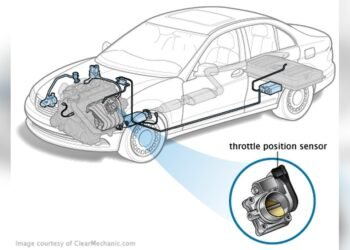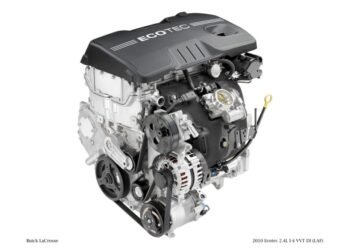To load a non-running car on a tow dolly, position the dolly in front of the vehicle and use a winch or manual power to pull the car onto the dolly. Secure the car’s front wheels with straps to ensure it stays in place during transportation.
Loading a non-running car onto a tow dolly can seem daunting at first. Yet, it’s a straightforward process with the right approach. Whether you’re facing a breakdown or need to transport a project car, a tow dolly offers a convenient solution.
This method is not only efficient but also cost-effective, eliminating the need for a full-sized trailer. The key lies in preparing both the dolly and the car, ensuring a smooth loading process. By following precise steps and securing the vehicle properly, you minimize the risk of damage during transit. This guide aims to simplify the task, offering peace of mind as you transport your vehicle safely.
Preparing For The Task
Loading a non-running car onto a tow dolly requires careful preparation. This guide helps car owners and towing professionals safely and efficiently manage this task. Pay close attention to each step to avoid injuries and damage to the vehicle.
Safety Measures And Precautions
Before attempting to load a car, safety comes first. Boldly adhere to these measures:
- Wear protective gear: Gloves and closed-toe shoes protect against scrapes and falls.
- Engage parking brakes: Prevent the tow dolly from rolling.
- Clear the area: Ensure no obstacles or people are in the loading zone.
- Check weather conditions: Avoid loading in extreme weather for safety.
- Use wheel chocks: Place these behind the dolly wheels to secure it.
Tools And Equipment Needed
Gather these tools to load the car smoothly:
| Tool/Equipment | Use |
|---|---|
| Tow Dolly | For transporting the car |
| Ratchet Straps | To secure the car wheels |
| Wheel Chocks | To stabilize the dolly |
| Winch | For pulling the car onto the dolly |
| Jumper Cables | If the car needs electrical power |
| Gloves and Safety Shoes | For personal protection |
Ensure each tool is in good condition before starting. This checklist guarantees a smooth loading process.
Assessing The Non-running Car
Assessing the Non-Running Car is the first step. It helps to understand what you need before loading it on a tow dolly. This process requires a keen eye for detail. The goal is to ensure safe and efficient towing.
Checking The Tires And Brakes
Start by examining the tires. They must be inflated properly. This means they should not be flat or overly worn out. Good tires help in smoothly rolling the car onto the dolly. Next, check the brakes. Ensure they are not stuck. Stuck brakes make loading difficult.
- Ensure tires are not flat
- Check for excessive wear and tear
- Make sure brakes are not stuck
Identifying Towing Points
Every car has specific towing points. These are spots where you can safely attach the car to the dolly. Look for these points in the car’s manual. They are usually located near the wheels. Correct identification is crucial for safe towing.
| Car Part | Importance |
|---|---|
| Tires | Must be properly inflated |
| Brakes | Should not be stuck |
| Towing Points | Need correct identification |
Remember, safety is key. Take your time during this assessment. A thorough check ensures a smooth towing process.
Choosing The Right Tow Dolly
Choosing the Right Tow Dolly is crucial for safe transport. It ensures that your non-running car arrives at its destination without damage. Let’s explore the important aspects of selecting a tow dolly.
Compatibility With Vehicle Size And Weight
Your car’s size and weight determine the tow dolly needed. Not all tow dollies can handle every vehicle. It’s vital to check your car’s specifications against the dolly’s capacity.
- Check your car’s weight: Your owner’s manual or a label inside the driver’s door can tell you this.
- Measure your car’s width: Ensure the dolly ramps and wheel wells can accommodate it.
- Front-wheel drive or rear-wheel drive: This affects how you’ll load the car.
Dolly Features And Specifications
Different tow dollies come with various features. Look for specifications that match your needs. A good dolly has secure straps and a sturdy frame. Some have tilt functions for easier loading.
| Feature | Description | Benefit |
|---|---|---|
| Straps | Adjustable wheel straps | Ensures a snug fit for your car’s tires. |
| Frame | Steel construction | Provides strength and durability. |
| Tilt Function | Allows dolly to tilt | Makes loading the non-running car easier. |

Credit: m.youtube.com
Positioning The Tow Dolly
Positioning the Tow Dolly is a crucial step in loading a non-running car. It ensures safety and efficiency. Proper alignment and securing are key. Follow these steps for a smooth process.
Aligning Dolly With The Car
- Place the dolly in front of the car.
- Ensure the ground is level and solid.
- Align the dolly’s ramps with the car’s wheels.
- Check the distance for easy maneuvering.
Securing The Dolly To The Tow Vehicle
- Attach the dolly’s coupler to the hitch ball.
- Lock the coupler and insert the pin.
- Connect the safety chains in a crisscross pattern.
- Check all connections are tight and secure.
- Verify lights and signals are working properly.
Loading The Car Onto The Dolly
Loading a non-running car onto a tow dolly seems tricky. But, it’s easy with the right steps. Here’s how to do it safely and quickly. Remember, safety first!
Winching The Car Forward
First, position the tow dolly in front of the car. Make sure the dolly’s ramp faces the car. Attach the winch’s hook to the car’s towing eye. Slowly winch the car up the dolly’s ramp. Keep the speed steady. Stop once the car’s front wheels rest on the dolly.
Centering The Car On The Dolly
Now, center the car on the dolly. This step is key. Check both sides. Ensure equal space on each side. This keeps the load balanced. Once centered, secure the car. Use wheel straps or chains. Tighten them well. But don’t damage the car. Double-check everything. Safety is crucial.
- Position the dolly correctly in front of the car.
- Attach the winch hook securely.
- Winch the car slowly onto the dolly.
- Ensure the car is centered on the dolly.
- Secure the car with straps or chains.
Following these steps makes loading a non-running car simple. Always prioritize safety. Check the car and dolly before moving.
Securing The Car
Securing the Car is a crucial step when loading a non-running car onto a tow dolly. Proper securing prevents movement, ensuring safety during transport. Let’s dive into the specifics of how to keep the car in place effectively.
Attaching Tire Straps
To begin, position the tire straps over each front tire. Ensure straps fit snugly against the tire tread. Next, connect the hook-end of the strap to the dolly. Pull the strap through the ratchet mechanism and tighten until secure. Finally, double-check that the straps are not frayed or damaged. This ensures the car stays in place during transit.
Locking In The Steering Wheel
Start by adjusting the steering wheel to the straight position. Use a steering wheel lock, or secure the wheel using strong straps. Attach one end of the strap to the steering wheel and the other end to a stable part of the dolly. Pull the strap tight and lock it in place. This prevents the wheel from turning, which is vital for a stable tow.
Connecting Lights And Safety Chains
Towing a non-running car requires meticulous attention to detail. Connecting lights and safety chains is critical for a secure tow. This guide covers the essentials of properly hooking up brake lights and indicators, and attaching safety chains to ensure safe transit.
Hooking Up Brake Lights And Indicators
Proper lighting is vital for safety during towing. Follow these steps:
- Locate the tow dolly’s wiring harness.
- Connect the harness to the car’s lighting system.
- Ensure the dolly’s lights sync with the car’s signals.
Test the connection before hitting the road. Turn signals and brake lights should work in unison with the towing vehicle.
Attaching Safety Chains To The Car
Safety chains provide a backup connection between the dolly and the car. To attach them:
- Find the tow dolly’s safety chain hooks.
- Cross the chains under the car’s frame.
- Secure the hooks to the car’s towing eyes or frame.
The chains should have slight slack but not drag on the ground. Ensure they do not interfere with the dolly’s wheels or the car’s body.
Final Checks And Pre-tow Inspection
Before hitting the road with a non-running car on a tow dolly, conducting final checks and a pre-tow inspection is crucial. This ensures safety and compliance with laws. Let’s dive into the essential steps for a smooth journey.
Inspecting Attachment Points
Attachment points are vital for securing the car. Check these carefully:
- Tow dolly straps: Ensure they are tight and not worn out.
- Safety chains: Confirm they are properly hooked to the car’s frame.
- Light connectors: Check for a secure connection, so lights work.
Double-checking these points prevents accidents and damage.
Reviewing The Route And Towing Laws
Knowing your route and local towing laws is important. Follow these steps:
- Plan your route: Choose roads suitable for towing.
- Check speed limits: Towing speeds can differ from normal speeds.
- Understand laws: Each area might have unique towing regulations.
Reviewing helps avoid fines and ensures a safe trip.
Tips For A Smooth Tow
Towing a non-running car requires careful preparation. A tow dolly can be a reliable tool for this job. Yet, specific steps ensure a smooth tow. Read on for tips that make the process easier and safer.
Driving Techniques With A Loaded Dolly
Driving with a tow dolly is different from regular driving. Here are key tips:
- Start slowly and increase speed gently.
- Make wider turns to avoid clipping curbs.
- Brake earlier than usual to allow extra stopping distance.
- Use lower gears on steep grades to maintain control.
- Always check mirrors for dolly position and tire status.
Monitoring The Load During Transit
Keep your car secure during the trip. Here’s how:
- Stop periodically to check straps and chains.
- Look for signs of wear or damage on the dolly.
- Ensure the car stays centered on the dolly.
- Adjust straps if the load shifts or settles during transit.
- Monitor for unusual noises, which can indicate a problem.

Credit: www.youtube.com
Unloading The Car Upon Arrival
Arriving at the destination means it’s time to unload your non-running car from the tow dolly.
You must do this carefully to ensure safety and prevent damage to the car.
Reversing The Loading Process
Unloading is essentially the reverse of loading.
First, park the tow vehicle and dolly on a flat, stable surface.
Apply the parking brake on both the tow vehicle and the dolly.
Check for any obstacles around the area that may hinder the process.
Detaching The Car Safely
Detaching involves several steps.
- Unlock the dolly wheel straps or chains.
- Remove these from the car’s wheels.
Next, carefully tilt the dolly’s platform.
Ensure that the car is in neutral and the handbrake is off.
Guide the car down slowly, using the winch if available.
Once the car’s wheels touch the ground, stop and check the surroundings.
Continue to lower the car until it is completely off the dolly.
Once detached, secure the dolly by raising the platform back up.
Re-attach any safety chains or straps to the dolly itself.
With these steps, your car is safely off the tow dolly and ready for the next step.
Troubleshooting Common Issues
Troubleshooting common issues can turn a daunting task into a smooth process. When loading a non-running car onto a tow dolly, you may face some challenges. Let’s tackle these head-on to ensure a safe and efficient load.
Dealing With A Stuck Car
Sometimes a car won’t budge. It’s stuck. Here are steps to free it:
- Check the brakes: Ensure they are not engaged.
- Inspect the wheels: They should turn freely.
- Use lubricant: Spray on stuck components.
- Enlist help: Push the car gently onto the dolly.
Responding To Mid-tow Complications
Issues can arise even after the car is loaded. Be prepared:
| Problem | Solution |
|---|---|
| Shifting car | Stop and re-secure the car. |
| Loose straps | Check and tighten all straps. |
| Unusual noise | Inspect the dolly and car for issues. |
Regular checks prevent mishaps. Stay vigilant and act swiftly on any signs of trouble.
Credit: www.tiktok.com
Frequently Asked Questions
Can A Non-running Car Be Towed On A Dolly?
Absolutely, a non-running car can be towed using a tow dolly. The key is to ensure the car’s front wheels are securely mounted on the dolly.
What Are Tow Dolly Loading Steps?
To load a car onto a tow dolly, align the car, drive or winch it onto the dolly, and secure the wheels with straps or chains.
Is A Tow Dolly Suitable For All Cars?
Tow dollies are ideal for front-wheel-drive vehicles, though rear-wheel and all-wheel drive cars may require additional steps, like removing the drive shaft.
How To Secure A Car On A Tow Dolly?
Securing a car involves attaching wheel straps over the front tires and ensuring the car is in park or neutral with the parking brake engaged.
What Safety Checks Are Needed Before Towing?
Prior to towing, verify that the tow dolly lights work, the car is properly strapped in, and double-check the dolly’s connection to the tow vehicle.
Conclusion
Loading a non-running car onto a tow dolly need not be daunting. With the right tools and steps, you can do it safely and efficiently. Remember to secure the vehicle properly and check local towing regulations. Safe towing starts with a solid foundation—your newfound knowledge is just that.
Get out there and tow with confidence!















